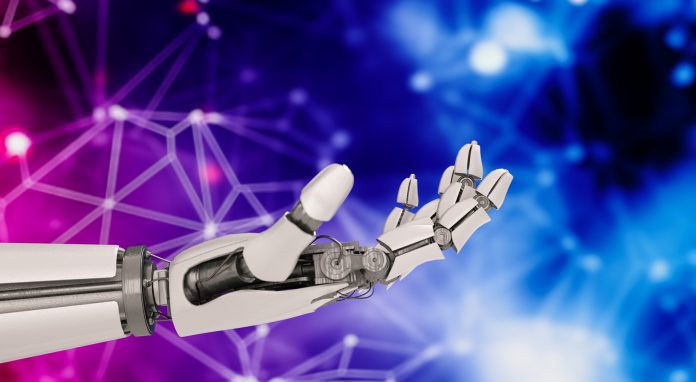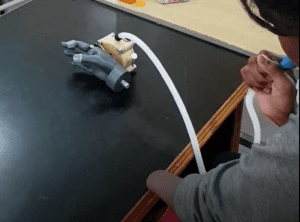
A research team at the University of Oxford has developed groundbreaking prosthetic hand technology powered by the user’s breathing.
The cutting-edge air-powered prosthetic hand represents a lightweight, low-maintenance and easy-to-use prosthetic option that is suitable for children and can increase access to assistive technology for people in low and middle-income countries.
The innovative prosthetic hand provides an alternative to the Bowden cable-driven body-powered prosthetics that have been utilised since the early 19th century, most notably for those too young or anatomically unsuited to the Bowden system.
Professor Jeroen Bergmann, the senior author of the research from the Department of Engineering Science at the University of Oxford, commented: “Our breathing-powered device provides a novel prosthetic option that can be used without limiting any of the user’s body movements. It is one of the first truly new design approaches for power and control of a body-powered prosthetic since the emergence of the cable-driven system over two centuries ago.”
Limitations of current assistive technology
Despite a range of currently available prosthetic options, all of which have varying suitability for the user, there has been little progress in innovating novel methods to power and control body-powered prosthetics compared to sophisticated externally powered devices.
The cable-driven body-powered system is the most commonly used functional upper-limb prosthesis; however, this type of prosthetic hand can be too expensive to buy and maintain for people in low-resource settings, limiting access.
Air-power prosthetic hand
The user controls the novel prosthetic by regulating their breathing to power a small Tesla turbine that accurately operates the finger movements of the prosthetic hand. Even young children can achieve the volume of air required to power the unit, and the gearing in the system determines the speed of the grasping motion of the prosthetic hand.

The prosthetic hand is cable and harness free. Its lightweight nature makes it suitable for children and adolescents who are still growing, and it requires minimal maintenance and training. The researchers have collaborated with a leading UK-based charity for children with limb differences, LimbBo, to develop and optimise the technology.
Jane Hewitt, Trustee of LimbBo, said: “One of our aims at The LimbBo Foundation is to ensure that all our children have access to any devices which will aid their day-to-day lives. No two limb differences are the same, and what will help one child will not be suitable for another. Currently, there is some choice available regarding prosthetics, but there are still children who need a completely different approach. For many, their lack of an elbow joint severely limits their access to prosthetic devices, and so we welcomed the chance to be involved with Professor Jeroen Bergmann to look at different approaches. This is an exciting development for many of our children.
“We welcome this research as a completely different approach to enabling our children to have the help that a prosthetic hand such as this would give them. The element of choice is important, and we would fully support any research and development plans that enable this. We feel that by including us in discussions, the team in Oxford really do want the best for our children.”
Dr Vikranth H. Nagaraja, the first author of the research from the University of Oxford, concluded: “Over 40 million individuals worldwide are estimated to have limb differences – most with no access to any form of prosthetic care. Besides, upper-limb prosthetics currently available to patients are often neither affordable nor appropriate, especially in low-resource settings. We hope our research represents a step-change in making prosthetics more widely accessible and helping overcome challenges with current options.”









